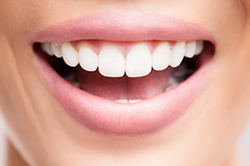Gingival Contouring Gingival contouring is a reshaping of the gum tissue. This can be done for a variety of cosmetic and medical reasons, though the procedure is most often cosmetic. The results of gingival contouring look very natural and can also promote good oral health by making teeth easier to clean. Usually for periodontitis, gingival contouring is used in combination with other treatments, such as pocket reduction surgery. We can provide more information on gingival contouring at Glen Perio. Gingival contouring is a reshaping of the gum tissue. This can be done for a variety of cosmetic and medical reasons, though the procedure is most often cosmetic. The results of gingival contouring look very natural and can also promote good oral health by making teeth easier to clean. Usually for periodontitis, gingival contouring is used in combination with other treatments, such as pocket reduction surgery. We can provide more information on gingival contouring at Glen Perio.Initial TreatmentBefore surgical intervention is necessary, our periodontist will try to treat gum disease with other measures. This will begin with antibiotics, scaling, and root planing. Scaling and root planing are a deep cleaning treatment that you would receive every three to four months. Scaling is a process by which our periodontist removes plaque and tartar from the teeth and under the gumline. Root planing is when they smooth the roots of the teeth and gums to encourage them to reattach to each other. Cosmetic vs. MedicalMost of the time, gingival contouring is provided for patients whose gums are larger than normal, making their teeth appear smaller. In this instance, there are almost no medical risks to simply leaving the gum as is. However, people tend to feel self-conscious about how they look. On the contrary, gingival contouring could be medically necessary if you have periodontitis. This disease destroys gum tissue and causes it to become inflamed. In addition, bacteria will become trapped under the gumline and it sometimes needs to be removed in order to reach the bacteria. This is done with pocket reduction surgery, where the gum is cut and lifted back to expose the pockets. Gingival contouring reshapes the gumline after this surgery, but it is done in the same appointment. In addition, tissue regeneration techniques may be used at this point. ProcedureThis procedure generally does not require you to be under general anesthesia. However, we will provide a local anesthetic to keep you comfortable during the procedure. Our periodontist will use either a scalpel or a soft tissue laser to reshape the gumline and remove any excess tissue. We will suture the gum tissue in place if necessary. As well as removal, gingival contouring can also be used to add new tissue if your gum has deteriorated, which would be the case if you had periodontitis. This tissue is taken from another part of the mouth, such as the palate. We place this tissue and use sutures to maintain the gum structure. In general, gingival contouring procedures will take between one and two hours. RecoveryFollowing surgery, local anesthetic may keep you numb for several hours. Over the next few days, your gums will likely be tender or have some pain. Depending on the extent of the procedure, our periodontist may provide a prescription medication for pain, in order to alleviate any of the discomfort. Alternatively, we may recommend using over-the-counter pain medication or applying ice or a cold compress to the area. We will also recommend eating soft foods while your gums recover. For more information about gingival contouring, call Glen Perio at 224-488-3392 now. |